With spring here and summer just around the corner, the days are steadily getting longer, and that means it’s time to head outdoors. Thoughts of racing a bicycle along a forested single-track trail or a tight city street might soon begin to fill our minds. Biking is a nice middle ground — a bit more exhilarating than hiking, but not as expensive as buying a motorcycle.
Perhaps you’re a mountain bike beginner, considering buying your first setup. Maybe you’re upgrading from a single-speed. You could even be looking to ditch your city-friendly folding bike and start heading for the hills. Whatever style of bike or bike riding you’re into, knowing how to shift gears is essential to optimum pedaling efficiency. Let’s dive into the basics of how to change gears on a bike.
Bike gears explained
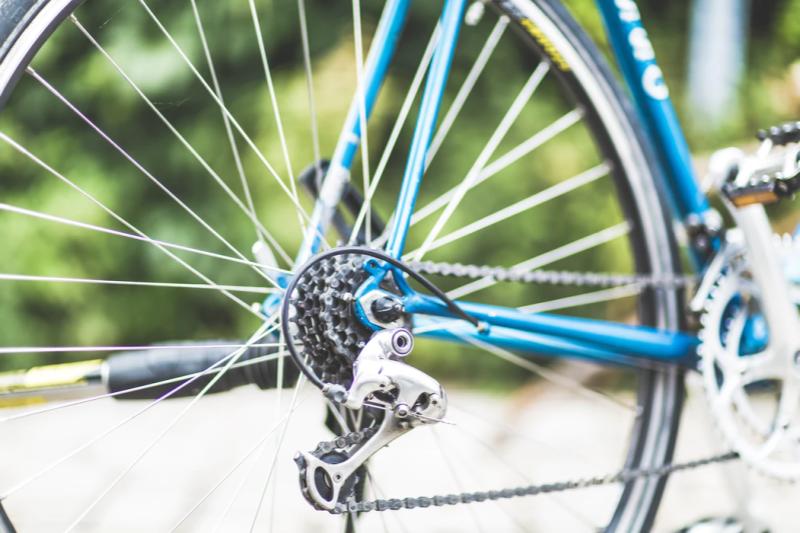
In simple terms, a gear is a basic component of your bike’s drivetrain. Gears are pulleys that help transfer power from your legs, through the bike’s pedals and cranks, then through the chain, and eventually to the rear wheel. They’re designed with a cogged outer rim, which meshes with voids in the chain to help you transfer power efficiently.
A single-speed bike only has two gears — one attached to the crank and one attached to the rear wheel. Bikes with shifters and derailleurs (more on that later) have one or more gears attached to the crank and multiple gears attached to the rear wheel. On both types of bikes, a chain connects the gears on the crank to the gears on the rear wheel.
Why do I need to shift gears?
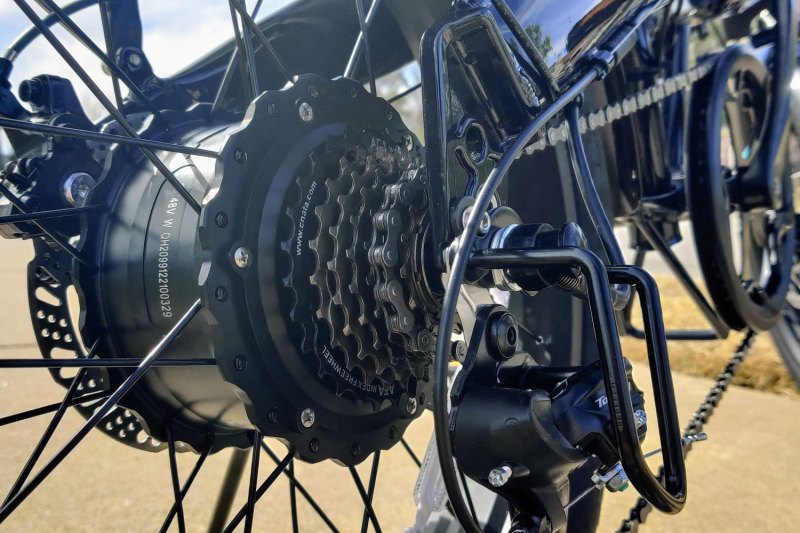
To better understand how to change gears on a bike, it helps to know what gears actually do and how they work. Gears help you achieve and maintain maximum efficiency while pedaling, no matter where you are riding. Approaching a hill? Downshift so your legs make more revolutions than the rear wheel, resulting in lower speed but higher torque. This makes pedaling feel easier.
Descending a hill? Upshift so your legs make fewer revolutions than the rear wheel, leading to higher speeds but lower torque. This makes pedaling feel harder, but you’ll also go faster.
How do gear shifters work?
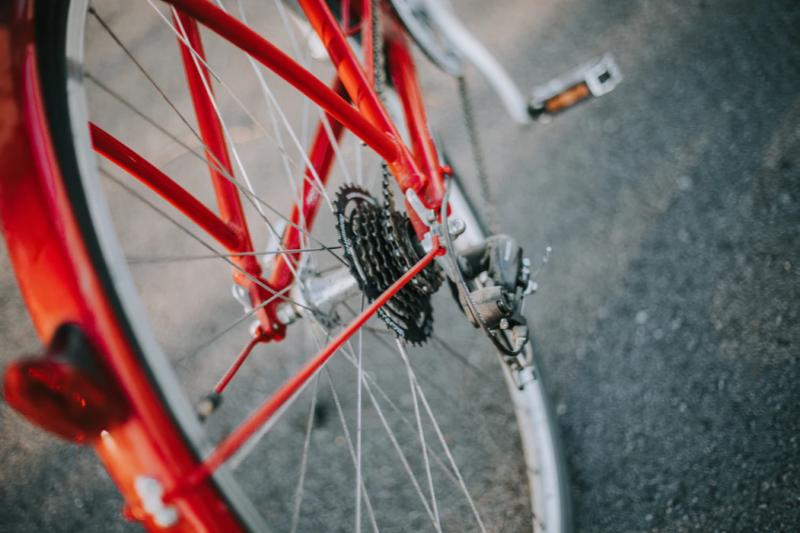
If your bike has gears that can be shifted, it also has derailleurs. A derailleur is a device that you control with the shifter that causes the chain to switch from a bigger to a smaller gear or vice-versa. Depending on the type of bike, there can be a derailleur on the rear gears only or one on both the rear gears and the crank gears. Gear shifters are connected to the derailleur(s) via an enclosed steel cable. The shifter’s job is either to pull in the cable (creating tension) or release the cable (creating slack), each corresponding to a movement of the derailleur.
How do I change gears with different shifting systems?
The method for shifting gears on a bike depends on the installed shifting system. Most, if not all, new bikes that you can buy have the shifters installed onto the handlebars. Some older bikes have shifters installed on the bike’s downtube or at the very ends of racing-style handlebars.
There are three main manufacturers of gear-shifting components — SRAM, Shimano, and Campagnolo. Let’s have a look at a few common types of shifters:
Thumb shifter
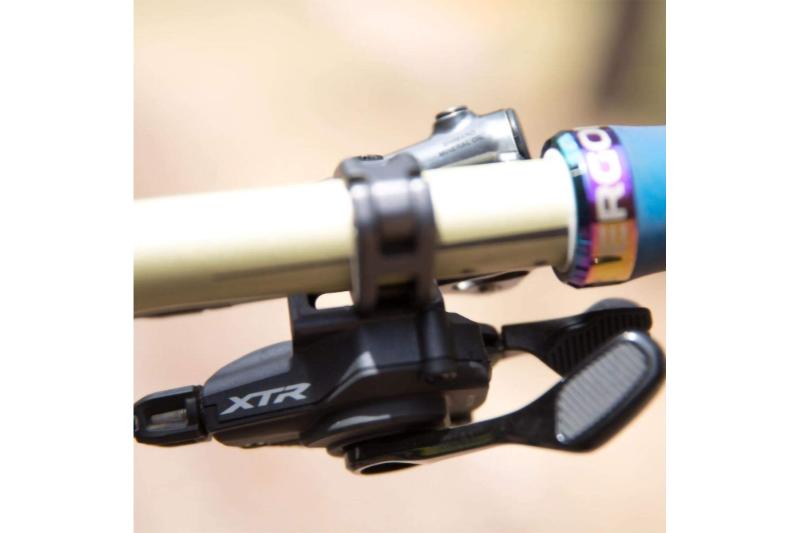
Shifters like this are most commonly seen on mountain bikes. Typically, the larger lever (closest to you in the above picture) is pushed with your thumb to downshift. When ready to upshift, simply push the smaller lever with your thumb.
Combination shifter
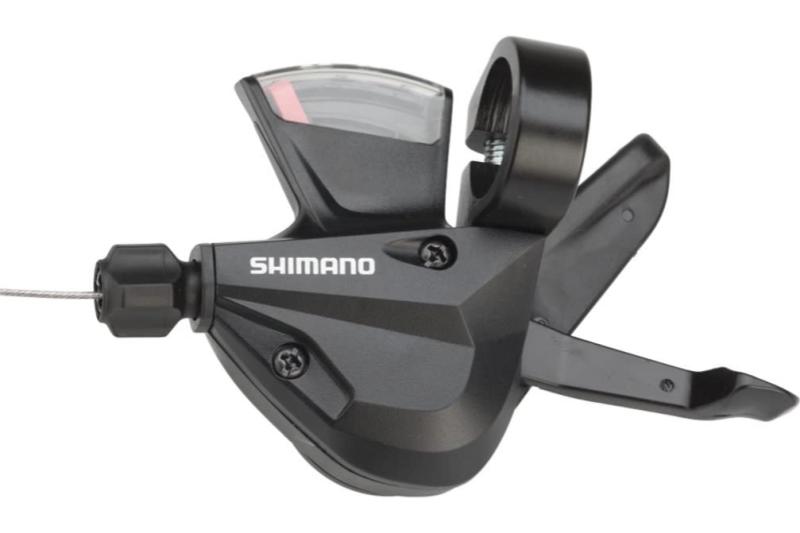
Typically seen on hybrid or fitness bikes, these utilize your forefinger as well. Similar to a pure thumb shifter, you press the thumb lever to downshift. However, to upshift, you push the longer upshift lever with your forefinger.
Twist shifter
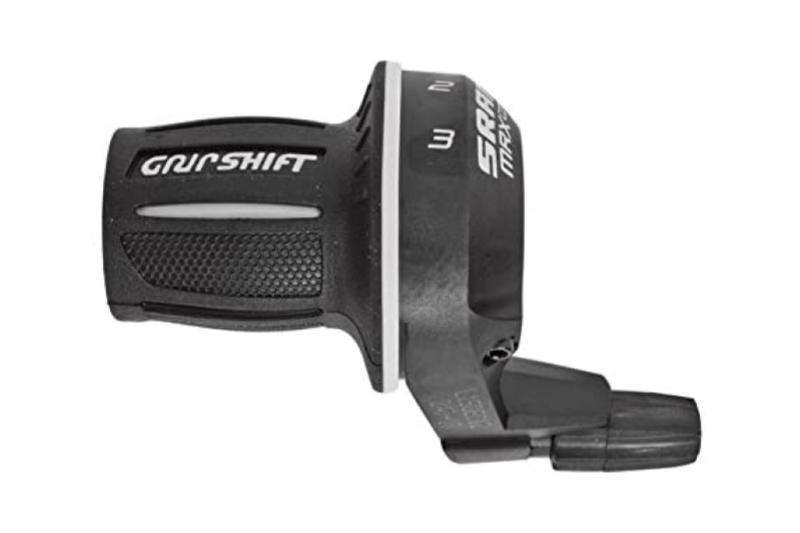
SRAM maintains the trade name Grip Shift for its line of twist shifters. Similar in function to twisting a motorcycle throttle toward you to go faster, you rotate the grip shift toward you to upshift. When you’re approaching a hill and need to downshift, rotate the grip shift away from you. Twist shifters are nice and compact, so they take up minimum space on the handlebars.
Integrated shifter + brake lever
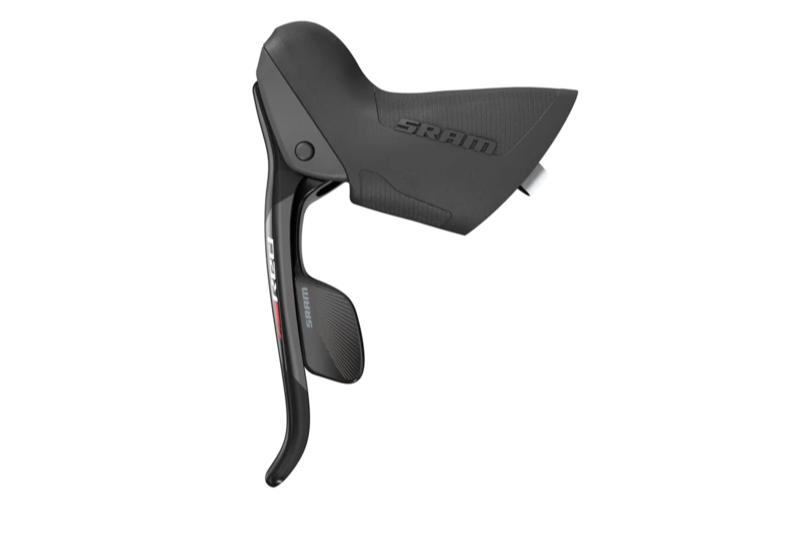
Think of a road bike with handlebars that curve forward, down, and back. Mounted to the downward curves are two brake levers — the tops of which are typically used to rest your hands while riding. Nestled in behind the brake levers are the gear shifters. While the brake levers are pulled straight back to actuate the brakes, the gear shifters are pushed sideways to change gears. This streamlined layout adds to aerodynamics and can increase biking speed.
Tips for better shifting
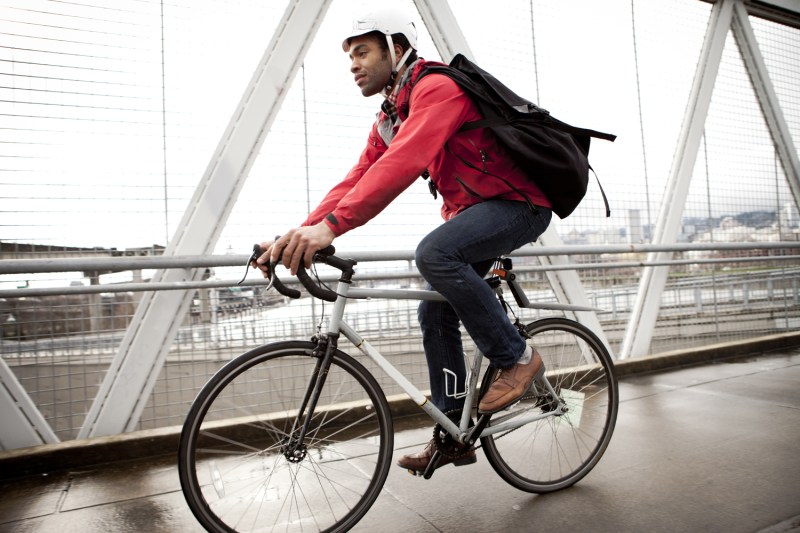
Once you know how to change gears on a bike, it’s fairly straightforward. But there are always ways to improve. Follow these tips to start shifting like a pro:
- Keep your shifting system maintained. Tension the cables properly, and keep the moving parts clean and lubricated.
- Pedal while shifting. Your bike won’t shift gears at all if you’re not rotating the pedals.
- Don’t shift under tension. Rather than downshifting midway through a tough climb, try anticipating it and downshifting before you start the climb. This ensures that there’s minimal tension on the chain, leading to easier shifting.
- Only shift 1-2 gears at a time. Changing between widely-spaced gears (ex. shifting from 8th to 1st) over too short a time could cause the chain to skip or even come off entirely.
- Adjust your shifters to fit. Most gear shifters can be positioned to best fit your hand size and riding style. Ride your bike around the block, find out where your hands naturally rest and feel most comfortable on the bars, then move or rotate your shifters to match. It makes sense to consider this as you’re figuring out what size bike you need.
As with anything, practice, practice, practice makes perfect. Knowing how to change gears on a bike can be tricky at first. As with anything, though, it’ll get easier the more you do it. Soon enough, you’ll figure out how to shift well enough to give yourself the most speed while saving the most energy. Then, the world is yours to explore.
Editors' Recommendations
- Not sure which mountain bike to buy? Try these 2 easy tricks to test out all of your favorites
- Consider this before you buy a mountain bike (or you’ll regret it)
- Better understand mountain bike categories before you buy: Your complete guide
- How to care for your Gore-Tex gear properly for max performance
- These are the mountain bike upgrades that will increase performance



